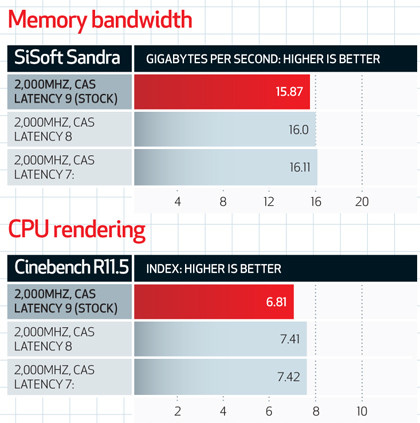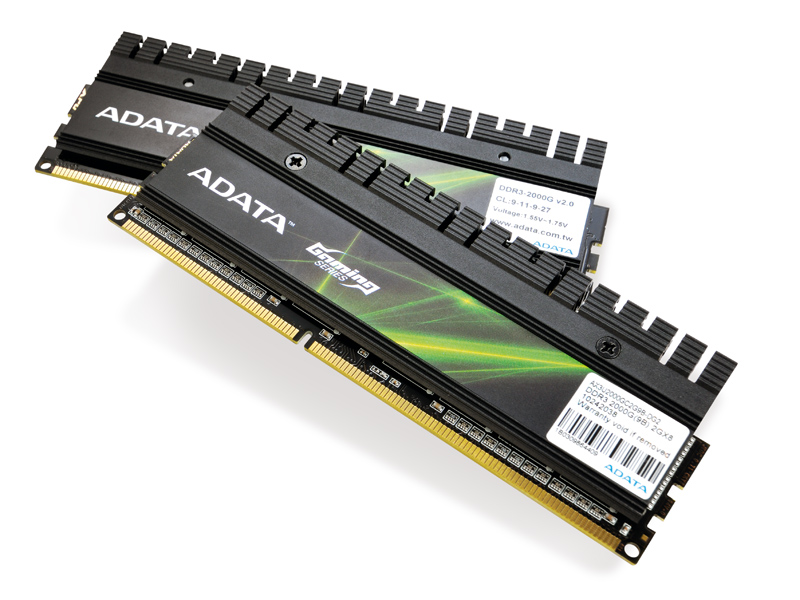TechRadar Verdict
Pros
- +
High frequency
- +
Low-budget
Cons
- -
High latency
- -
Low overclock potential
Why you can trust TechRadar
Right now is a slightly confusing time to buy RAM. Those upgrading from a dusty old system with DDR2 support to a current platform such as Intel's Z68 or AMD's 990FX, will need to invest in some DDR3 memory to play nicely with your new chipset.
If you're on a triple channel chipset such as Intel's X58, you'll need three DDR3 modules instead of two. Why? Because there are three slots and you need to fill them. Just keep looking at the slots, manufacturers keep saying.
Sadly for most of us the practical benefits of tri-channel memory are next to none, and the additional financial outlay for triple-module kits makes that sting all the more. Best stick to dual channel, then.
That's only the beginning of your long road of decisions as a potential RAM buyer, though. 'What capacity should I go for?' we hear you say. 'What's more important, low latency or high frequency?' Good question. Let's… 'How much difference does RAM make anyway and how much should I pay for it? Am I ugly? Why did Dad leave?'
Multi-tasking
Calm down! Wipe your worried brow and consider this – if you multi-task a lot, working on a desktop full of minimised applications, multi-tabbed browsers full of flash-heavy sites, then 8GB of RAM is a good idea. More, if you can afford it.
For the gamer, those priorities shift towards low latency and high frequency, at the expense of capacity, if need be. Enter (deep breath) ADATA's XPG Gaming v2.0 Series DDR3 2000G 2x 2GB kit.
Aimed squarely at gamers with more sense than money, it hits the ground running at 2,000 MHz, which spells good news for memory throughput and CPU-heavy tasks.
Speed trap
Is 4GB enough for a gaming rig? Absolutely. RAM has precious little effect on frame rates at any capacity, and while doubling up to 8GB will make heavy desktop use run smoother, 4GB isn't going to hobble your favourite games.
In that regard, ADATA's Gaming series has all the bases covered. Another impressive feather in its cap is an operating frequency of 2,000MHz. 1,600MHz is the standard at this price, although overclocking headroom varies wildly between sets. Slightly surprisingly, this set won't budge up to 2,133MHz; it's apparently operating pretty damn near maximum frequency.
There is some room for manoeuvre in latency timings, though. Stock settings are an underwhelming 9-11-9-27; a rather lethargic set of figures. The first figure: CAS latency, controls CPU communication speed and has a noticeable effect on performance. We managed to clock CAS latency down to a much more acceptable seven in the BIOS menu.
Tech Labs


Despite our own tweaking though, ADATA's XPG Gaming v2.0 Series DDR3 2000G just doesn't have the raw speed we would expect. Corsair's Dominator GT 4 GB kit is a tenner more expensive and despite running at 1,866MHz, its lower latencies and robust, overclockable build make it more attractive.
Follow TechRadar Reviews on Twitter: http://twitter.com/techradarreview

Ad creative by day, wandering mystic of 90s gaming folklore by moonlight, freelance contributor Phil started writing about games during the late Byzantine Empire era. Since then he’s picked up bylines for The Guardian, Rolling Stone, IGN, USA Today, Eurogamer, PC Gamer, VG247, Edge, Gazetta Dello Sport, Computerbild, Rock Paper Shotgun, Official PlayStation Magazine, Official Xbox Magaine, CVG, Games Master, TrustedReviews, Green Man Gaming, and a few others but he doesn’t want to bore you with too many. Won a GMA once.
